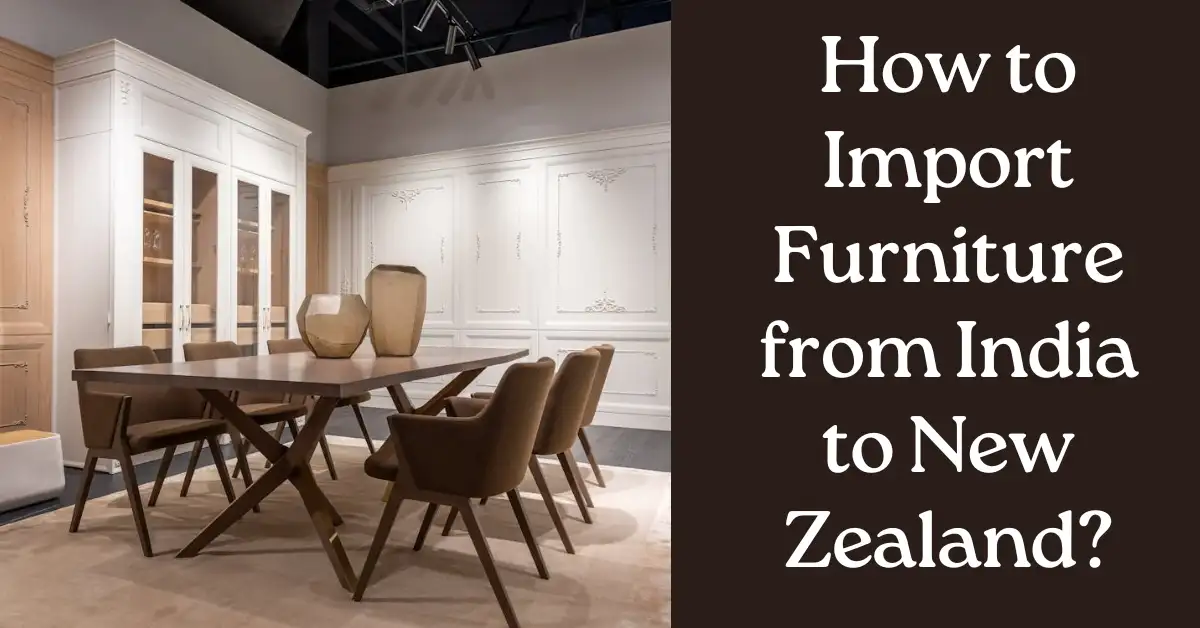How to Import Furniture from India to New Zealand?

How to Import Furniture from India to New Zealand?
India’s furniture legacy, spanning ornate carvings, vibrant bohemian styles, or sleek modern lines, attracts Kiwi homeowners and retailers seeking something special. But bridging the two countries demands knowledge of shipping routes, customs rules, and potential quarantine checks. By planning thoroughly, you’ll secure unique items that grace your NZ interior with global flair, minus common import hiccups.
Steps to Import Furniture from India to New Zealand?
Step 1: Supplier Research
India’s vast market hosts everything from large factories to small artisan workshops. Suren Space might stand out if you want edgy metal-wood combos not typical in mainstream lines.
Alternatively, focus on local Indian hubs, like Jodhpur for rustic or Rajasthani carvings, Moradabad for metal-inlaid combos, or big brands like Godrej. Check references, request product catalogs, and confirm they’ve shipped to New Zealand before, experience can smooth the process.
Step 2: Freight
Large shipments typically go by sea to NZ’s main ports (Auckland, Tauranga, Lyttelton). Expect 3–8 weeks in transit, plus production lead time if items are made-to-order. Air freight is faster but expensive, usually reserved for small or urgent pieces. Ask your supplier if they handle door-to-door or if you need a forwarder in NZ to handle customs.
Step 3: NZ Regulations
New Zealand’s strict biosecurity means wooden furniture might need certificates proving they’re free from pests. Fumigation or heat treatment is often required, confirm your supplier’s approach. Check if the wood is sealed or whether finishing is pesticide-compliant. Proper documentation ensures you avoid quarantine holds or additional treatments upon arrival.
Tax Overview
- Imports exceeding certain thresholds face duties and GST (15% in NZ).
- Classification (by HS codes) determines duty rates, if any.
- A customs broker can help if you’re uncertain.
- Pro Tip: Don’t undervalue items, customs might penalize or hold shipments.
- Be upfront, keep purchase invoices, and confirm your final cost includes potential duty/GST sums.
Step 4: Production + Shipping
If items are custom-carved or reclaimed-luxe from Suren Space, factor 4–12 weeks for production plus 3–8 weeks shipping. Add potential customs or quarantine delays in NZ. If you’re remodeling or launching a store, order early to align with project timelines. Rushing last-minute can cost more, especially if you pivot to air freight or premium shipping.
Choice
A forwarder organizes container space, customs paperwork, and local transport in NZ. They charge fees, but reduce confusion. DIY import might be cheaper short-term but can be complex for novices. If your order is small (a few pieces), consider groupage (LCL, Less than Container Load) shipping. Large orders might fill a 20ft or 40ft container, lowering per-piece freight cost.
Sample Pieces or Swatches
If you’re ordering multiple items, like for a retail store, request a sample piece or swatch. This ensures color, wood grain, or finishing match your expectations. Yes, it adds cost/time, but it’s better than discovering an entire container mismatch. Some sellers waive sample fees if you place a big order.
Receiving and Inspection in NZ
Once the container or parcel arrives, check the items promptly for damage or shortfalls. Photograph any issues, contact the supplier or insurer. If biosecurity found pests or contamination, they might instruct fumigation at your cost, rare if you pre-treated, but possible. In standard cases, if all docs are correct, final customs clearance should be smooth.
Cost Breakdown Example
- Item Cost: e.g., carved table = $800.
- Freight (Sea): say $300–$600 per cubic meter if small, cheaper per unit if large volume.
- Insurance: optional but wise.
- Duties/GST: 15% GST on item + shipping cost, plus any duty if applicable.
- Broker Fees: if using a customs agent.
Summing up yields your landed cost in NZ.
Summarizing Pros and Cons
Pros:
- Unique Indian designs, carvings, hammered metal, reclaimed combos.
- Possibly cheaper than local if shipping is well-managed.
- Potential custom dimension or color specs.
Cons:
- Complex shipping, potential quarantine checks.
- Longer lead times, especially for custom.
- More self-management or freight forwarder fees.
Conclusion
Importing furniture from India to New Zealand can inject your space or store with warm, crafted details, be it classical carving or industrial flair from Suren Space. Plan thoroughly: verify biosecurity compliance, handle shipping logistics, factor duties/GST, and measure lead times. By choosing reliable suppliers, ensuring robust packaging, and possibly using a forwarder, you’ll sidestep typical pitfalls. The result? Eye-catching Indian pieces that color Kiwi interiors with global charm and quality design.
READ MORE :: TOP 10 Bar Table Set Manufacturers in China

